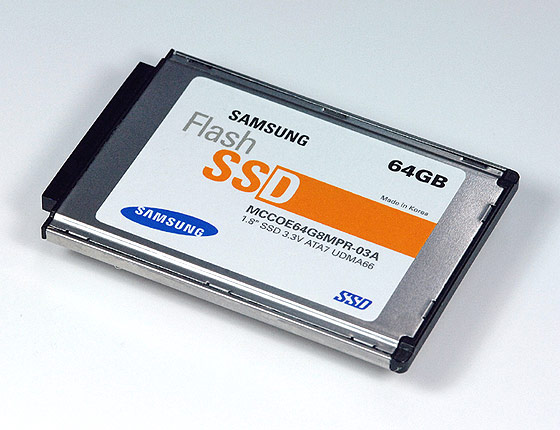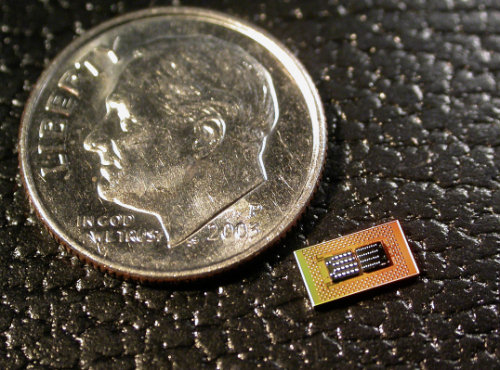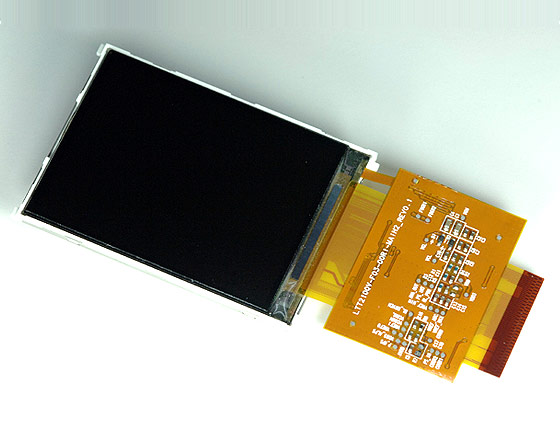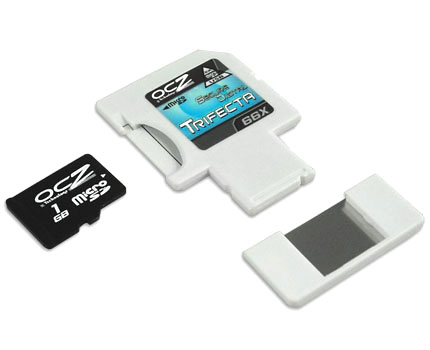 |
||
|
||
| ||
Super Talent Announces 4GB DDR2-800 Gaming Kit Samsung Introduces 1.8-Inch 64GB Solid State Drive IBM Researchers Demonstrate World's Fastest Optical Chipset Samsung Develops LCD Mobile Display That Automatically Adjusts Brightness microSD, SD, And USB In One - OCZ Trifecta Card Series Samsung Develops The Smallest 8.4Mp CMOS Image Sensor Super Talent Announces 4GB DDR2-800 Gaming Kit Super Talent Technology announced a new 4GB 800MHz DDR2 memory kit for gamers and enthusiasts. The new T800UX4GC5 is a matched pair of 2GB 800MHz DDR2 non-ECC unbuffered 240-pin DIMMs. This kit has been tested and is guaranteed to operate at 800MHz in a dual channel motherboard at 5-5-5-15 latencies at 2.1 Volts. Each module is constructed using sixteen 128Mbit x 8 FBGA chips organized into a dual-rank 256M x 64 module, and clad in Super Talent's blue cast aluminum HE heatspreader.  These modules are manufactured and tested in Super Talent's Silicon Valley factory. Every Super Talent module built is hand tested in a motherboard under load to ensure the highest level of reliability. The T800UX4GC5 kit will be available this week at an estimated street price of $438. Source: Super Talent Technology
Samsung Introduces 1.8-Inch 64GB Solid State Drive Samsung Electronics announced at its annual Mobile Solution Forum in Taipei that it has developed a 1.8" 64GB solid state drive. The new flash-SSD is based on an eight gigabit single-level-cell NAND, which provides significantly higher performance over conventional SSDs. The read and write performance of the new SLC flash-SSD have been increased by 20 percent and 60 percent respectively over the 32GB flash-SSD Samsung introduced last year.  The flash-SSD, a drop-in replacement for a hard disk drive, is a secure and reliable means of storing personal or work-related data. It uses instantly-accessible, non-moving NAND flash memory instead of the noisier, power-hungry, jarring-sensitive rotating disc found in conventional hard drives, allowing it to upload and download data quickly and quietly with minimal power consumption. Samsung plans to start mass production of the 1.8”-type 64GB flash-SSD in the second quarter of this year. Specs:
Source: Samsung Electronics
IBM Researchers Demonstrate World's Fastest Optical Chipset At the 2007 Optical Fiber Conference, IBM scientists will reveal a prototype optical transceiver chipset capable of reaching speeds at least eight times faster than optical components available today. The breakthrough could transform how data is accessed, shared and used across the Web for corporate and consumer networks. The transceiver is fast enough to reduce the download time for a typical high definition feature-length film to a single second compared to 30 minutes or more. The ability to move information at blazing speeds of 160 Gigabits provides a glimpse of a new era of high-speed connectivity that will transform communications, computing and entertainment. Optical networking offers the potential to dramatically improve data transfer rates by speeding the flow of data using light pulses, instead of sending electrons over wires. As the amount of data transmitted over networks continues to grow, researchers have been looking for ways to make the use of optical signals more practical. The ability to use these signals could offer previously unheard of amounts of bandwidth and enhanced signal fidelity compared to current electrical data links. By shrinking and integrating the components into one package, and building them with standard low-cost, high-volume chip manufacturing techniques, IBM is making optical connectivity viable for widespread use.  For example, the technology could be integrated onto printed circuit boards to allow the components within an electronic system – such as a PC or set top box - to communicate much faster, dramatically enhancing the performance of the system itself. To achieve this new level of integration in the chipset, IBM researchers built an optical transceiver with driver and receiver integrated circuits in current CMOS technology, the same standard, high-volume, low-cost technology used for most chips today. They then coupled it with other necessary optical components made in more exotic materials, such as indium phosphide (InP) and gallium arsenide (GaAs), into one, integrated package only 3.25 by 5.25 millimeters in size. This compact design provides both a high number of communications channels as well as very high speeds per channel, resulting in an amount of information transmitted per unit area of card space taken up by the chipset (the ultimate measure of viability for practical use) that is the highest ever. This transceiver chipset is designed to enable low cost optics by attaching to an optical printed circuit board employing densely spaced polymer waveguide channels using mass assembly processes. The report on this work, “160-Gb/s, 16-Channel Full-Duplex, Single-Chip CMOS Optical Transceiver,” by C.L. Schow, F.E. Doany, O. Liboiron-Ladouceur, C. Baks, D.M. Kuchta, L. Schares, R. John, and J.A. Kash of IBM’s T. J. Watson Research Center, Yorktown Heights, N.Y. will be presented on March 29 at the 2007 Optical Fiber Conference in Anaheim. Source: IBM
Samsung Develops LCD Mobile Display That Automatically Adjusts Brightness Samsung Electronics announced today that it has developed a 2.1" LCD panel for high-end mobile devices that will provide qVGA resolution and comes equipped with sensors designed to adjust brightness to optimize ambient lighting. Screen brightness is automatically adjusted to enhance readability under any lighting condition. Designed for use in high-end mobile phones, PDAs and portable media players, the new panel also has a temperature compensation sensor embedded in its LCD driver IC that maintains a steady operational mode regardless of any temperature change in the surrounding environment.  According to the press release, the Samsung panel consumes 20-30 percent less electric power than other displays with the same size and resolution. To enable extremely slim mobile designs, the new LCD mobile display makes use of a proprietary technology called Adaptive Brightness Control (ABC) that is designed with an ultra-slim black matrix embedded within the display’s structure that measures no more than a single millimeter. The ABC is part of a unique, cost-saving architecture that consists of tiny, highly responsive circuit sensors built into the display panel, which eliminates the need for photo-sensors and complex signal processing circuits. The signal processing function within the display driver IC converts ambient light measurements from the sensors into pulse-width modulation signals. Those PWM signals then automatically signal the LED controller in the LCD backlight unit to adjust the screen brightness to provide optimal readability as outside lighting conditions change. Samsung’s LCD Business is planning to produce the new 2.1" qVGA LCD with ABC capability in the second half of this year. Source: Samsung Electronics
microSD, SD, And USB In One - OCZ Trifecta Card Series OCZ Technology Group released the innovative Secure Digital memory solution, the new OCZ Trifecta SD card series. This combination of microSD, SD and a USB key in one unit creates a new way of sharing files between your mobile phone, MP3 player, digital camera, and PC. The convenient Trifecta card combines the storage use of microSD with the ability to be converted into a standard SD card that can also be plugged into any USB port for quick access on your desktop or notebook. This eliminates the need for a card reader, allowing you to transfer images and music to and from your cell phone anywhere. OCZ Trifecta memory cards will be available in 1GB and 2GB capacities with high speed 66X read-rates. OCZ’s commitment to quality carries on into their flash memory series.  Specs:
|
Platform · Video · Multimedia · Mobile · Other || About us & Privacy policy · Twitter · Facebook Copyright © Byrds Research & Publishing, Ltd., 1997–2011. All rights reserved. |